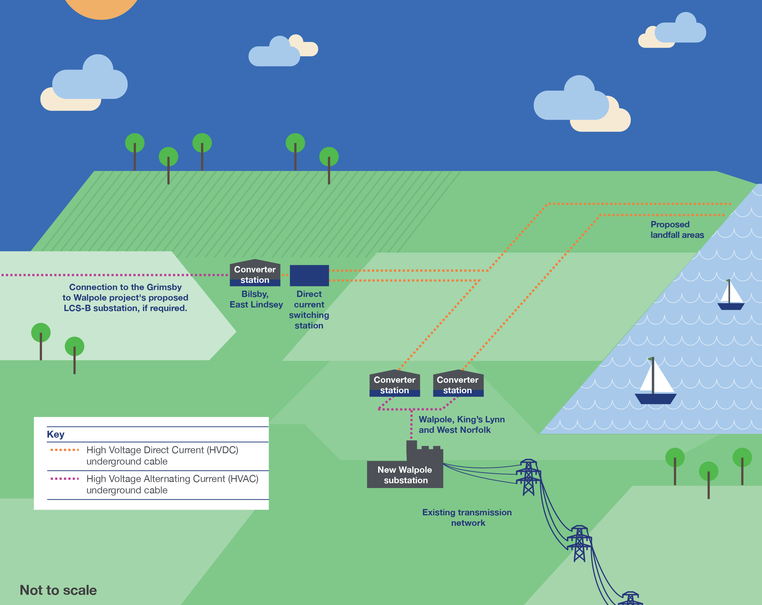
Our proposals
EGL 3 and EGL 4 are National Grid Electricity Transmission’s proposals to install two new primarily offshore high voltage electricity links and associated onshore infrastructure between Scotland and England.
EGL 3 and EGL 4 are needed as the existing transmission network does not have enough capacity to securely and reliably transport the increasing amount of energy generated in Scotland and Scottish waters, particularly from offshore wind, to population centres in the Midlands and the South of England.
Timeline

2024
Stage 1 (non-statutory) public consultation

2025
Stage 2 (statutory) public consultation

2026
DCO application submission

2028
Construction starts

After 2033
Fully operational
How EGL 3 and EGL 4 would help reinforce the network
By reinforcing the transmission system from Scotland down to the Southern East Midlands region with EGL 3 and EGL 4, we would avoid creating a bottleneck and enable the transfer enough energy to power up to four million homes in the Midlands and South of England.
EGL 3 and EGL 4’s proposed main onshore elements in the districts of East Lindsey, Boston, South Holland, and King’s Lynn and West Norfolk are:
- Underground HVDC cables - from proposed landfall to converter stations, approx. 100km long
- Three converter stations
- One proposed converter station located near Bilsby, which could connect one of the projects to National Grid Electricity Transmission's Grimsby to Walpole project's proposed Lincolnshire Connection Substation (LCS) - B, if required
- Two proposed converter stations in the Walpole area for EGL 3 and EGL 4
- One direct current switching station – used by one of the projects to direct power through its cables into either its converter station near Bilsby or in the Walpole area
- One substation in the Walpole area – both EGL 3 and EGL 4’s Walpole converter stations would connect to this
- Underground HVAC cables – connecting the converter stations to their associated substations
As the project proposals progress further, it could be necessary to install a short length of new overhead line, or underground cable, to connect the proposed new substation in the Walpole area to the existing electricity network.

The Scottish ends of the project
We’re jointly developing EGL 3 with Scottish and Southern Electricity Networks Transmission (SSEN Transmission) and EGL 4 with Scottish Power Energy Networks (SPEN). SSEN Transmission and SPEN are responsible for obtaining the relevant consents in Scotland and in Scottish waters.
Converter stations
Converter stations contain specialist electrical equipment that enable electricity to be converted from alternating current to direct current or vice versa depending on the direction of operation.
Our proposals include two converter stations in the Walpole area and one near Bilsby.
Substation
The main role of substations is to convert electricity into different voltages. This is needed so the electricity can be transmitted throughout the country and then distributed throughout local neighbourhoods and into our homes and businesses.
As part of EGL 3 and EGL 4’s planning application, we are proposing to develop one new substation in the Walpole area.
Direct current switching station
A direct current switching station is equipment used to tie together two or more electric circuits through switches, allowing us to send the flow of electricity to two or more locations.
For one of the projects, we could use a direct current switching station located near Bilsby to direct the flow of electricity to either our proposed converter station located in the Walpole area or the one proposed near Bilsby.
Underground cables
A variety of methods can be used to lay underground cables, including ducted and trenchless methods.
To install our cables a construction area is required. This is called a swathe and includes a cable trench/ducting, soil storage and a temporary haul road. We expect that the swathe for EGL 3 and EGL 4 to be approximately 80m wide, dependent on location.
Once the cables have been installed, the swathe is reinstated, with the land returned to its former use.

What's energy resilience got to do with movie marathons? Find out how – and why – we’re connecting more clean energy to power the things you love.
Find out more